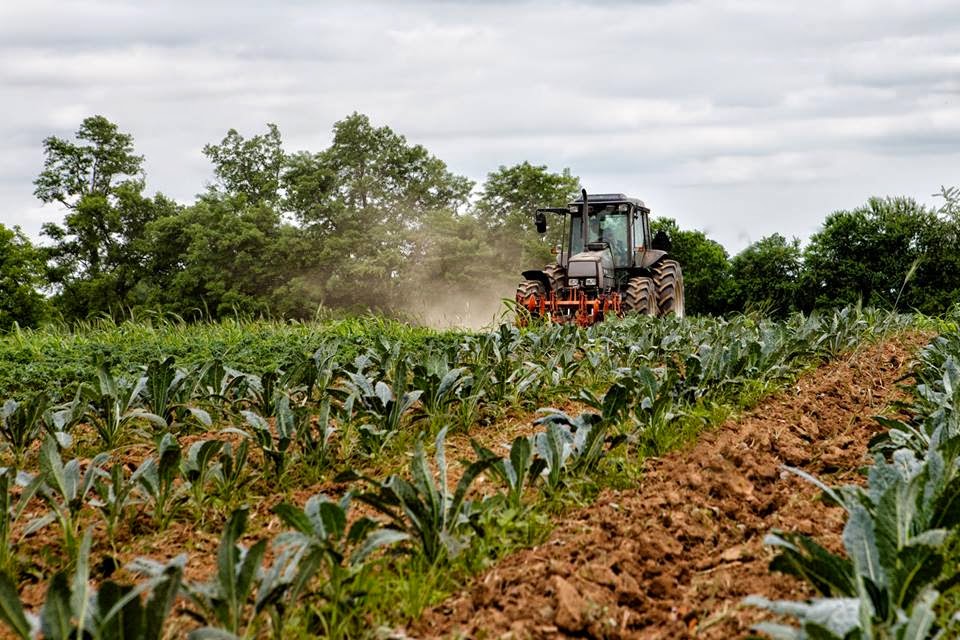Are
you Signed Up for the FALL SEASON? Go online or call us at the farm to organize
your Fall shares today.
Transition Time
With the tree
leaves turning all shades of yellow and red, the walnuts falling, and some fall
crops coming in, it signals us to think differently about what to eat in the
coming months. Years ago, we more or less shut down produce operations shortly
after the first killing frost, now we have the good stuff virtually year round.
With your support, we have built a reliable program to ensure you have access
to the most wholesome food around. There are only three weeks left in your “summer
share”, so here are some options to keep eating well.
Our Fall CSA share starts the week
following the last summer share, so nobody will miss out on all the good
veggies. The fall program is five shares over ten weeks and timed to coincide
with the holiday cooking schedule. All colors of potatoes are secured in the
cooler and the sweet potato harvest has begun. Fall squash abounds, and the
lettuce and greens will be in their prime in cooler weather. Check on our
website for the amended pick-up location schedule and get signed up.
The leadership of the Lexington Farmers
Market is working to put a weather wrap around the North end of the downtown pavilion
to make for a better marketing environment for its customers and vendors. We
toughed it out all winter last year, along with a few other farms. As cold and
snowy as it was, customers still prefer the Saturday outdoor market to an
indoor location. Short Street will remain open and there will be patio heaters
inside for additional comfort. With these amenities, the honey and flower
farmers can keep coming as well. And you can be assured that we will be downtown
each Saturday.
When making your Holiday cooking plans, be
sure to secure the perfect Turkey or that Leg-of-Lamb that is part of your
family tradition. We have the best turkey crop we have ever had at Elmwood
Stock Farm. Things started with a great hatching percentage, albeit a bit late
due to a cold spring. Using knowledge that we have learned over the years about
rearing young poults and employing improved pasture management systems, the
turkeys look great. We take pre-orders for every turkey. You can sign up at the
market or via email, but do not put it off as the more popular sizes may sell
out. Information about the organic Heritage and Broad Breasted breeds are on
our web blog – the site where all of your CSA Farm share newsletters are archived.
Beef and lamb is now available as well. With
all the rain throughout the summer, the pastures are flush with good clovers
and bluegrass to boost our grass fed program. Various cuts are available at the
market, but you may want to reserve several strip steaks, or a leg-of-lamb for
that special holiday treat. You can pick one up now, or we can hold it for you
until you are ready to prepare for family or friends.
As the shorter cooler days of fall descend
upon the Bluegrass, there are still lots of ways to access local organic food.
We will make it as easy as we can with the Fall CSA delivery schedule, and you
can always set up a time to stop in at the farm. We grew some extra Roma tomatoes
with the intent to have diced tomatoes, marinara, ketchup, and salsa available
for you in BPA free jars. You have our email address for special orders, or
feel free to phone and talk over any questions.
Consider being a year round CSA Shareholder and sign up for one of the
Winter CSA options we offer in January through March – we’ll have details
available after Thanksgiving.
We can be found in the Pavilion in
downtown Lexington on Saturday mornings. On a cold or wet Saturday morning,
bundle up and come see us at the market. We will be genuinely glad you did, and
we have more time to talk and share stories with you than the busy summer
markets allow. Secure some extra greens and freeze them for the winter months.
The organic meats, a sample CSA share, or the jarred tomato products make great
gifts – we also offer gift certificates.
Thank you for your loyalty, and know we
are proud to be your farmer all year!
In Your Share :
Celery
Garlic
Lettuce
Sweet Pepper
Potatoes
Spaghetti
Squash
Sweet Potatoes
Fresh Herbs
Lacinato Black
Kale
Hot Pepper
Radishes
Recipes:
Baked Spaghetti Squash with Beef and
Vegetables,
from All Recipes magazine, serves 6
2 to 3 lb. spaghetti squash, halved lengthwise
and seeded
1
lb. ground beef or 1 package Italian sausage, removed from casing
½
C green bell pepper, diced
½
C red bell pepper, diced
¼
C red onion, diced
1
clove garlic, chopped
14.5
oz. diced tomatoes, drained
½
tsp dried oregano
½
tsp dried basil
¼
tsp salt
¼
tsp black pepper
2
¼ C shredded sharp cheddar cheese, divided
Preheat
oven to 375°F. Place squash on a baking
sheet, cut sides down and bake 40 minutes, or until tender. Cool slightly to handle, then shred with a
fork and set aside. Reduce oven temperature to 350°F. Lightly grease a casserole dish. In a large
skillet over medium heat, cook the ground beef until evenly browned. Drain off
most of the fat, then mix in the green pepper, red pepper, onion and garlic.
Continue to cook and stir until vegetables are tender, about 5 minutes. Mix the
shredded squash and tomatoes into the skillet, and add seasonings. Cook and stir until heated through. Remove from heat and mix in 2 C cheese until
melted. Transfer to prepared casserole
dish. Bake 25 minutes. Sprinkle with
remaining cheese and continue baking 5 minutes more until cheese is melted.
One Skillet Sweet Potato Burrito Bowls
1
pound (heaping 2 C) sweet potatoes, peeled and cut into bite-sized chunks
3
T olive oil, separated
1
C chopped sweet bell pepper
1
C rice (uncooked white rice OR pre-cooked if brown rice)
1
14.5 oz. can diced tomatoes OR equivalent diced fresh tomatoes
1
15.25 oz. can black beans OR equivalent of home-cooked beans
1
C frozen corn
½
tsp minced garlic
½
tsp chili powder
1
tsp cumin
2
C vegetable or chicken broth
2
T fresh lime juice, optional
1
½ C shredded cheddar cheese
Toppings:
sour cream, along with other options such as chopped cilantro, chopped avocado
or guacamole, chopped fresh Roma tomato
In
a large skillet over medium high heat, combine 2 T olive oil with all of the
sweet potatoes. (If you don't like any amount of crunch to your sweet peppers,
add them after the sweet potatoes have been cooking for about 6-8 minutes.) Sauté
the sweet potatoes for 8-10 minutes or until pretty tender. Add in remaining 1
T olive oil and the rice. Cook, stirring
constantly for 2-3 minutes at medium heat. Add in the undrained diced tomatoes,
drained & rinsed black beans, frozen corn, minced garlic, chili powder,
cumin, and vegetable or chicken broth. Give everything a really good stir,
bring to a boil, and then reduce the heat to a little bit above low, but not
quite to medium heat. Cover the skillet with a lid and allow to simmer for
10-15 minutes or until all the liquid is drained and the rice is cooked
through. Remove the lid and stir in the lime juice. Top with the shredded
cheddar cheese and then cover the skillet for 1-2 minutes to allow the cheese
to melt. When serving, top your burrito bowls with sour cream and/or any other
desired toppings.
Simple Radish Salad
1 bunch radishes, greens removed
2 tsp sesame oil
3 tsp lemon juice
salt and pepper
dash soy sauce
toasted sesame seeds or pumpkin seeds
1 bunch radishes, greens removed
2 tsp sesame oil
3 tsp lemon juice
salt and pepper
dash soy sauce
toasted sesame seeds or pumpkin seeds
Wash
radishes and slice pretty thin, then toss with the dressing ingredients. Store refrigerated. Toss on a few seeds as a garnish when ready
to serve.


